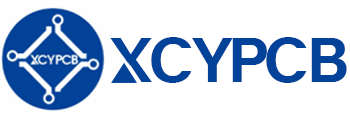02
2025
-
07
Demystifying theMultilayer Board: Common Questions Answered
Author:
UnderstandingMultilayer Boards
When it comes to modern electronics, the Multilayer Board plays a pivotal role. This technology has revolutionized how we think about circuit design, enabling complex interconnections while saving space. But what exactly is a multilayer board?
What is aMultilayer Board?
Simply put, a multilayer board consists of multiple layers of conductive pathways and insulating material, all stacked together. These layers can range from two to even dozens, depending on the application. This design not only allows for more intricate circuit designs but also enhances the performance of electronic devices.
Why Use aMultilayer Board?
You might be wondering, "What’s the big deal?" Well, here’s the scoop: multilayer boards are compact, efficient, and provide better signal integrity than their single or double-layer counterparts. With the demand for higher density in electronic devices—think smartphones and tablets—these boards are absolutely indispensable.
Common Applications
From medical devices to aerospace technology, multilayer boards are everywhere! They’re particularly useful in applications requiring high-speed data transmission, such as network equipment and high-frequency circuits.
Common Questions AboutMultilayer Boards
So, let’s dive into some frequently asked questions! You know, the ones that keep folks up at night.
1. What are the advantages of multilayer boards?
Well, buckle up! The advantages are numerous: higher component density, improved signal integrity, reduced electromagnetic interference (EMI), and better thermal management. Plus, they help save real estate on your PCB (Printed Circuit Board).
2. Are multilayer boards more expensive?
Ah, the age-old question of cost! Yes, they can be pricier than single or double-layer boards due to the complexity involved in their manufacturing. However, the long-term benefits often outweigh the initial costs—especially in high-performance applications.
3. How do you design a multilayer board?
Designing a multilayer board isn’t as daunting as it sounds! It typically involves using specialized software that allows engineers to lay out the circuit patterns on each layer. Remember, attention to detail is key here!
4. What materials are used in multilayer boards?
Good question! Most multilayer boards use FR-4 as the substrate, but other materials like Rogers and PTFE are also popular for high-frequency applications. The choice of material can significantly impact the board's performance.
Final Thoughts
In summary, multilayer boards are a cornerstone of modern electronic design, packed with advantages that cater to the demands of today’s tech-savvy world. Whether you’re a seasoned engineer or a curious newbie, understanding these boards can help you appreciate the complexity and beauty of electronic devices.
So, the next time you marvel at your smartphone or tablet, remember the multilayer board working tirelessly behind the scenes! It's a small world, but oh boy, is it intricate!
Contact Information
Address: 318 Nanshan Road, Jianghai District, Jiangmen City, Guangdong Province
Welcome to contact me

Mr. Fang

Miss Li
Message
